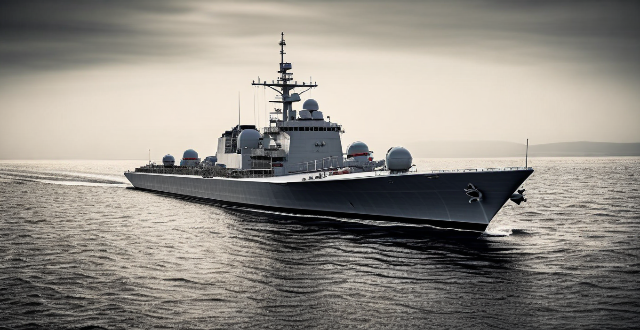Climate change is significantly impacting the operational environments for defense forces, affecting military planning, strategy, and tactics. Extreme weather events are becoming more frequent, requiring defense forces to manage or support disaster response operations. Changes in terrain and landscape due to melting ice caps and rising sea levels can affect military operations. Climate change can exacerbate social tensions and conflicts over resources, leading to internal displacement and potential security threats. Health risks and disease spread can expand due to changes in temperature and rainfall patterns. Energy requirements and logistics may need adjustments in operational environments affected by climate change.

How Climate Change Influences the Operational Environments for Defense Forces
Climate change is a global phenomenon that is altering the operational environments for defense forces in numerous ways. These changes can significantly impact military planning, strategy, and tactics. Here's a detailed look at how climate change influences the operational environments for defense forces:
Extreme Weather Events
*Highlighted Point*:
Extreme weather events such as hurricanes, floods, droughts, and heatwaves are becoming more frequent and intense due to climate change. This can create urgent humanitarian needs and disaster response operations that defense forces may be required to manage or support.
*Bullet Points*:
- Increased Frequency: More frequent extreme weather events mean defense forces must be prepared to respond to a higher number of emergencies.
- Resource Drain: Allocating resources for disaster relief can divert personnel and equipment from other missions.
- Training Needs: Personnel must be trained in disaster response and humanitarian aid distribution.
Changes in Terrain and Landscape
*Highlighted Point*:
Melting ice caps, rising sea levels, and altered precipitation patterns are changing the physical landscape, which can affect military operations.
*Bullet Points*:
- Accessibility Challenges: Melting permafrost can make previously solid ground unstable, affecting transportation and infrastructure.
- Map Revisions: Defense forces must continually update maps to reflect new coastlines and altered terrain.
- Strategic Reconsideration: Strategic locations such as airfields and bases may need to be relocated or reinforced due to rising sea levels.
Impact on Human Security
*Highlighted Point*:
Climate change can exacerbate social tensions and conflicts over resources such as water and arable land, leading to internal displacement and potential security threats.
*Bullet Points*:
- Refugee Movements: Droughts and failed harvests may force people to move, seeking resources and safety, potentially crossing borders and causing regional instability.
- Resource Disputes: Competition for scarce resources can lead to localized conflicts requiring military intervention.
- Humanitarian Roles: Defense forces may be tasked with maintaining order and providing humanitarian assistance during crises related to climate change.
Health Risks and Disease Spread
*Highlighted Point*:
Changes in temperature and rainfall patterns can expand the habitats of disease-carrying organisms, posing health risks to deployed troops.
*Bullet Points*:
- Disease Surveillance: Troops must be vigilant about diseases like malaria and dengue fever spreading into new areas.
- Medical Preparation: Defense forces must ensure medical units are equipped to handle a broader spectrum of health issues.
- Preventative Measures: Increased emphasis on vaccinations and preventive medicine for deployed personnel.
Energy Requirements and Logistics
*Highlighted Point*:
Operational environments affected by climate change may require adjustments in energy consumption and logistical support for defense forces.
*Bullet Points*:
- Energy Supply: Alternative energy sources may need to be developed or utilized in areas where conventional power is unreliable.
- Supply Chain Resilience: Ensuring supply chains can operate effectively in extreme weather conditions is crucial.
- Equipment Durability: Military equipment must be designed to withstand harsher environmental conditions.
In conclusion, climate change presents complex challenges that defense forces must adapt to. The ability to anticipate and respond effectively to these changes will be critical for maintaining operational readiness and effectiveness in an evolving environment.